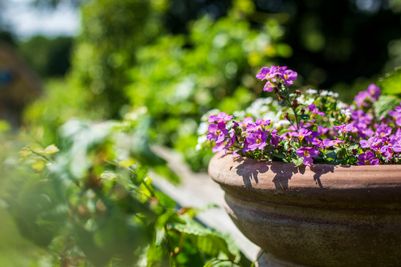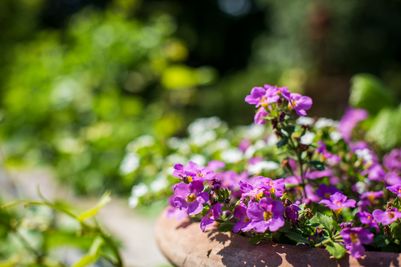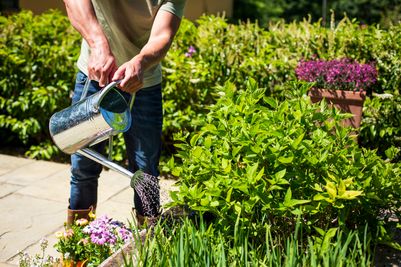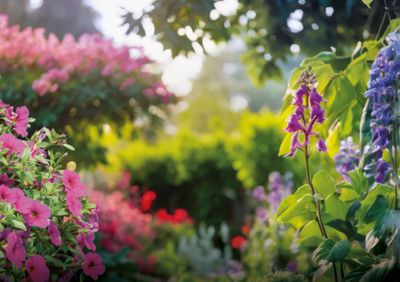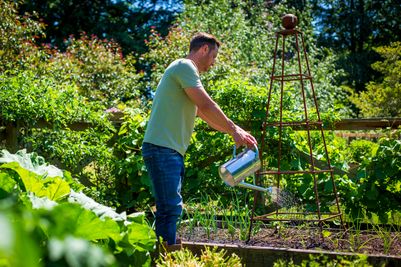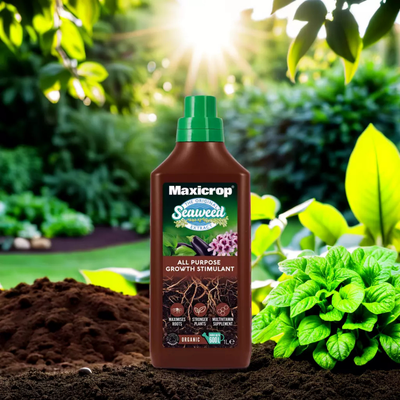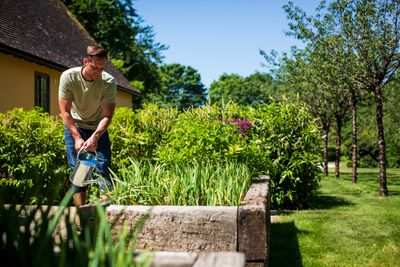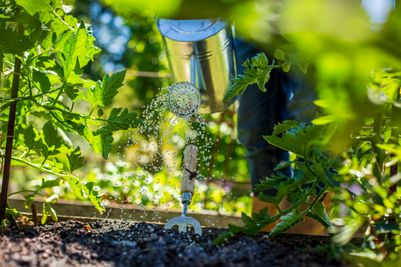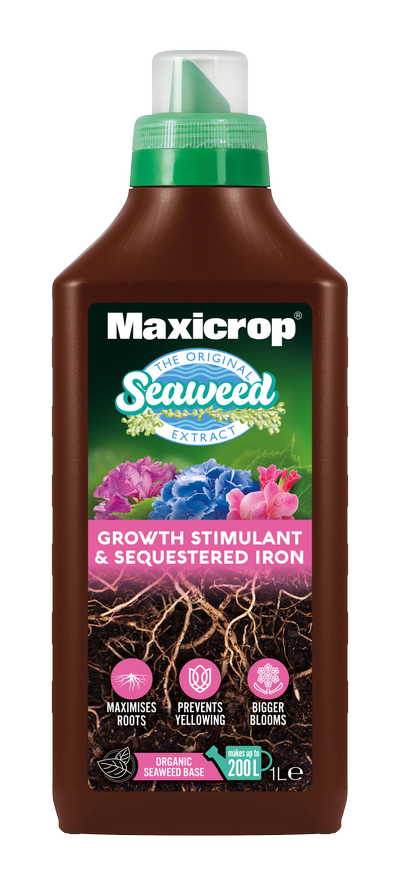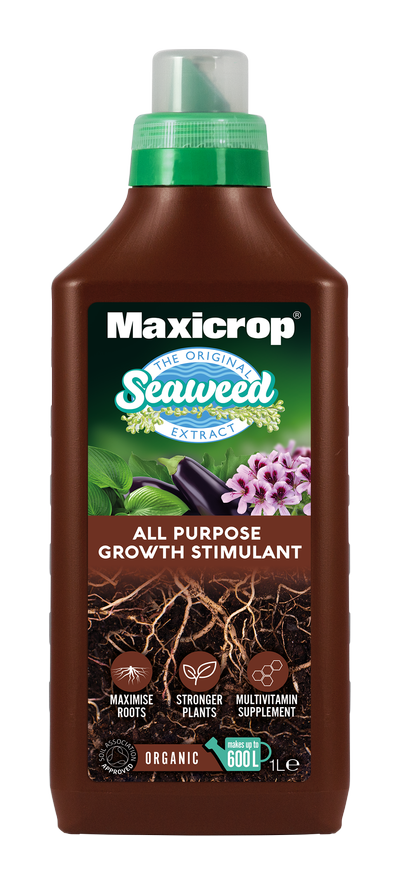From Winter to Bloom: Preparing Garden Beds & Borders for Spring and Summer Growth
Published:
Read Time: 4 mins
As spring approaches, gardening enthusiasts are gearing up for the new growing season. One of the first and most important steps to ensuring a successful garden is preparing your garden beds and borders; a focal point for any garden. With the right approach, you can create an environment that promotes healthy growth, vibrant flowers, and bountiful vegetables.
Angharad James, product manager at Maxicrop, shares some top tips for a beautiful border.
1. Clear the Area:
Throughout the winter, beds and borders can retain debris, weeds, or dead plants, so it is essential to clear the area. This will not only improve the appearance of your space but also prevent unwanted competition for nutrients and water. For tough weeds, consider using a shovel or hoe to remove the roots.
2. Assess and Improve Soil Quality:
Healthy soil is the foundation of any garden. Test your soil’s pH and nutrient levels to understand its needs. If the soil is compacted, use a garden fork or tiller to loosen it and improve drainage. Add compost or organic matter to enrich the soil, providing essential nutrients and encouraging beneficial soil organisms. Seaweed-based products like Maxicrop’s All Purpose Growth Stimulant are an excellent way to restore and maintain soil health. Enriched with high-quality seaweed extract sourced from Norwegian waters, Maxicrop is a must-have for enhancing plant vitality from the ground up. This natural stimulant improves root development, making it easier for plants to absorb essential nutrients from the soil.
3. Plan Your Planting Layout:
Consider the plants you’d like to grow and how much space they need. Taller plants, such as sunflowers or lupins, should be placed toward the back of the bed or border to avoid shading smaller plants. For borders, consider a mix of perennial and annual plants for long-term beauty and seasonal variety.
When planning your layout its essential to consider the sunlight. South and west-facing borders receive the most sunlight whereas east and north-facing borders get much less (and only at the time of day when the sunlight is weakest). This will determine which plants are best suited to your beds and borders.
4. Planting Bulbs
Once the last frost of the year takes place (usually around mid-March, but remember this is not guaranteed!), it is time to plant summer flowering bulbs such as dahlias, lilies, gladioli, cannas, crocosmia, eucomis, nerines, anemone and begonia. Most bulbs need a sunny spot and well-drained soil, however, some bulbs, such as narcissi, will also grow in partial shade. Many bulbs look great planted in drifts among perennials in borders. They should generally be planted three times their depth, but this can vary from bulb to bulb.
5. Transferring Seedlings
If you have started seedlings in trays indoors, you’ll need to transfer them to borders or beds when the threat of frost has passed and they’re large enough to handle, allowing them to grow and develop more easily. Gently hold the top leaves and carefully ease the seedlings out of the tray. Use a dibber to create a hole in the soil. Carefully firm the compost around the roots, allowing the first leaves to sit just above the surface. To ensure your plants get the appropriate level of nitrogen, phosphorus and potassium (NPK) needed to thrive, we recommend using a biostimulant with a complete fertiliser. Maxicrop’s wider range of feeds and growth stimulants makes it easy to ensure plants have everything they need for strong, healthy growth!
6. Watering Systems and Maintenance
To make watering more efficient, consider installing soaker hoses or drip irrigation. These systems deliver water directly to the roots, minimizing evaporation and runoff. Regularly check your garden beds for signs of pests or diseases and take action promptly to maintain plant health.
7. Mulch for Moisture and Weed Control
Once your garden beds are planted, apply a layer of mulch around your plants. Mulching helps to retain moisture, suppress weeds, and maintain consistent soil temperatures. Organic mulches such as straw, bark, or wood chips are excellent choices.
By following these simple yet effective steps, you’ll be well on your way to creating a thriving garden that flourishes all season long. Whether you’re growing flowers, herbs, or vegetables, taking the time to properly prepare your garden beds and borders will lead to healthier plants and a more beautiful garden.
For more expert gardening advice and information about Maxicrop, visit www.seezon.co.uk
Ends
Editors notes
Maxicrop® has been a trusted name in gardening for over 80 years, known and loved for its premium organic seaweed-based products that support plant growth and resilience.
Sustainably sourced from the pristine waters off the Norwegian coast, Maxicrop’s seaweed extract is rich in nutrients and antioxidants, offering a natural bio-stimulant to develop strong plant cells and boost root growth, while building resistance to disease, drought and cold.
Its hero product, the popular All Purpose Growth Stimulant, is a pure bio-stimulant with an enriched formula designed to enhance root development, nutrient uptake, and stress tolerance in plants.
The wider range features products that carefully combine this high-quality, highly concentrated seaweed base with Nitrogen, Phosphorus, and Potassium to provide complete care for a variety of garden needs, including Vegetable Growth Stimulant and Feed, Tomato Growth Stimulant and Feed, Growth Stimulant and Sequestered Iron, and Moss Killer and Lawn Tonic.
Certified organic by the Soil Association, Maxicrop provides eco-conscious gardeners with effective, sustainable solutions for healthy, thriving plants.

